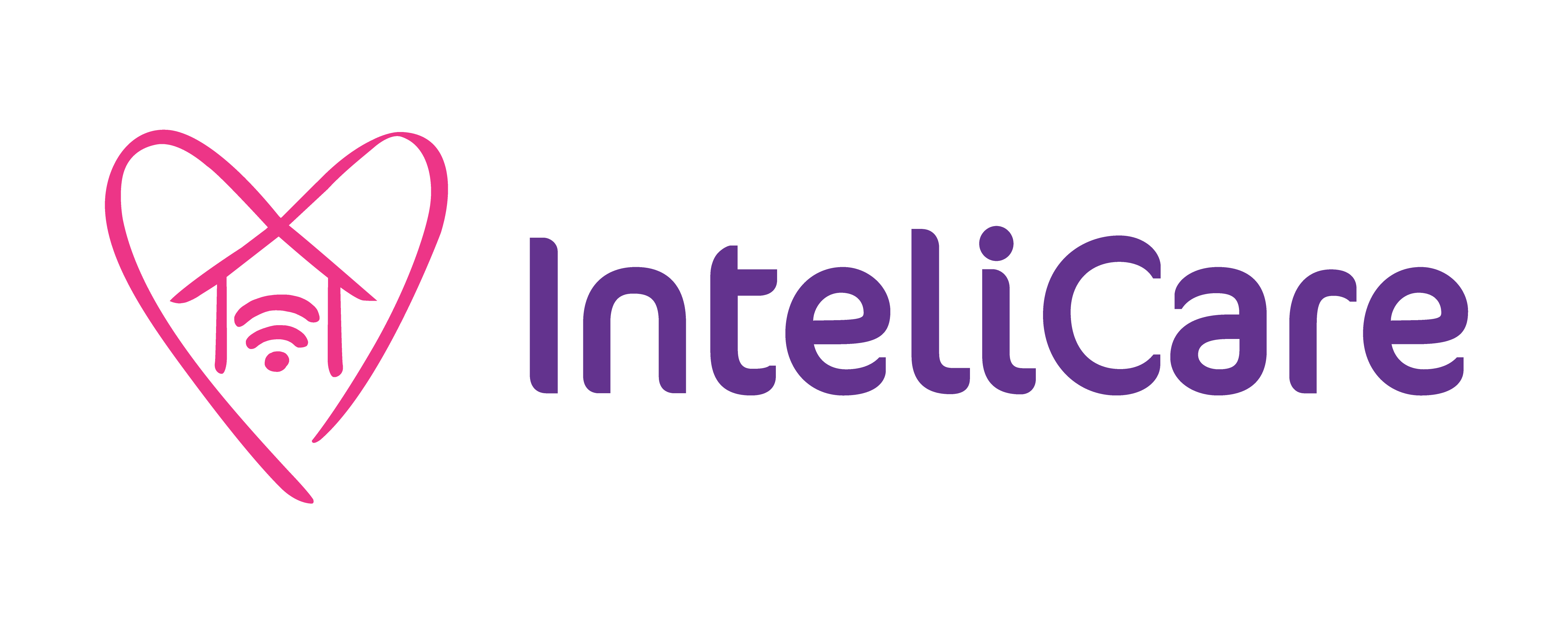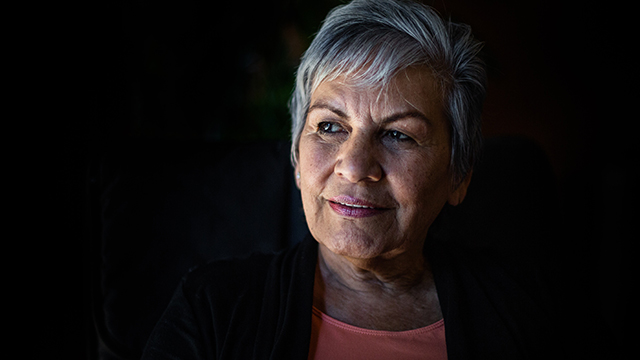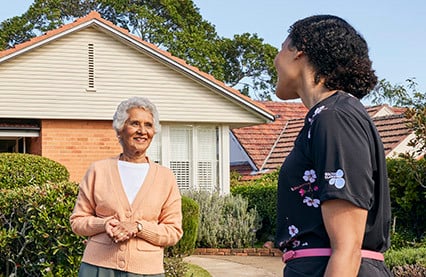InteliCare Managing Director and CEO, Jason Waller, spoke with Alan Kohler in March 2020 to discuss the progress of InteliCare’s IPO and how a technology that supports seniors living at home could be exactly what is needed in the market.
Listen to the full interview here or read the transcript below.
Jason, I can’t decide whether it’s terrible timing or good timing, because it’s not a good time to be coming to a market with an IPO in general, but your product is potentially what people need at this time. What do you think? How are you feeling about it?
Exactly. What we do is we turn any home into a smart home and then by that data, using AI, we then know what’s normal behaviour in someone’s home and send alerts out to families and caregivers when something’s out of the ordinary. You can imagine in a normal environment, we help people defer or avoid the cost of aged care. But in this kind of climate you can see it reinforces the need for people to be able to live independently, but also we see opportunity for it as an isolation assisted device as well.
You’re in the middle of a $5.5 million dollar raising. What sort of commitments have you had, any at all? I mean, have you actually got some of the money or not?
We’ve had very strong commitments cited in a pre-IPO roadshow a few weeks ago and there was intense interest because people get it straight away, so the idea and the concept is very relatable to brokers and brokers and funds. Of course in the current environment, there is some uncertainty but we’re confident we can still do this.
Always with these interviews I start off talking about cash, so before we get into the details of your product and how it works, can we just talk about your cash situation for the moment? You go into the IPO with only $457,000 in the bank and you’re still burning obviously a fair bit of cash you used in the latest half-year $600,000, so would it be fair to say that this was in the nick of time for you, this capital raising?
It is, obviously we needed to increase our cash, but we’re also a company that’s post revenues. We’ve got revenue coming in from the important deals we did at the end of 2019. That will give us around $500,000 this quarter.
Okay, take us through the revenue – these are deals that you’ve got, how long are they for? What sort of money are you making from them?
They’re with two partners, two aged care providers. At the end of last year, we had 25 systems in the field and through these two deals, this will add another 200 systems in total to our power production. They’re both under Commonwealth grants and full details from the prospectus. The bottom line is that one’s for a six month subscription and one’s for 12 months, and they’ll increase the number of systems in the field, as I said, by a factor of 10-fold.
Probably a good idea to just tell us how your business operates, what’s the model? It’s a subscription model obviously, but you’re doing obviously larger deals with aged care operators but are you also selling it to individual families?
That’s right. The Australian market is about $20 billion dollars, of which 85 per cent is Government funded.
That 85 per cent, you’re referring to the aged care market, is that right?
That’s right, and it falls into two broad categories, so think of it as nursing homes and home care packages, and we’re targeting that market using a B2B model. People pay for the hardware up front and then it’s an ongoing subscription on the SaaS arrangement. The B2C market is about 3-4 times larger. These are people that don’t receive funding at all, there’s about $3-5 million in that group. That’s brought a DIY approach, so think of it like the old CCTV systems where people used to have those professionally installed, but now they go down to Bunnings, JB Hi-Fi, Harvey Norman, buy them off the shelf, self-install and download an app and away they go.
The same with our product, it can be self-installed using the app and you can be off and running. But if you have Government funding, particularly through a home care package, or you have NDIS funding through a package, hardware cost and a subscription are covered for those people.
What is the hardware?
It primarily consists of commercial off the shelf sensors, movement detectors to test whether someone’s up and about each day, power sensors on their kettle or microwave and we can start to look at meal preparation, vibration sensors on the washing machine, door open/closed so we know whether they’re becoming socially isolated, on the front and back door we test people going to and from the house. We don’t report to manufacturers, our sector source is the IoT platform that sits behind it and the AI. Using the sensors, we combine them and start to learn over the period of about a week what’s normal domestic behaviour. Then people get push notifications to their phone that all is okay at mum or dad’s house, and if there is something particularly out of the ordinary then they escalate to text messages as well.
What do you sell the hardware packages for?
It’s about $1,500 dollars retail at this stage, and $1,000 for a reseller. The subscription fee is $60 dollars a month, or about $45 dollars a month through a reseller. To give you a sort of price point, Pendants, which are the only sort of technology which are in the market now, are about $45 dollars a month and in 80 per cent of falls people don’t use them, they don’t have it on them or they don’t have it charged or they don’t want to press because they don’t want to be a burden to the family. We’re passive sensors, there’s no cameras, it doesn’t require any activation, it just gets on and does the job.
What happens when one of your clients has a fall?
We’re careful not to market ourselves as a fall detection system. We certainly have and our clients have detected falls using our system, but we’re more about fall prevention and overall wellbeing. There’s a more important question to be asked than has mum or dad had a fall and that is, are they likely to have a fall and is that likely to change over time, as we provide those kinds of printed analyses, getting stronger and stronger with that using our AI, but because we also report on things like, for example, night time bath time use. If you see increased activity going to the bathroom at night, that could be a sign of a urinary tract infection and a UTI can lead to delirium which is one of the top three causes of falls.
So now you start to get ahead of the game, you become preventative rather than waiting for the crisis to happen and then in a hurry trying to find aged care. There’s a 9 to 36 month wait period for those kinds of beds.
What’s your subscription per month?
It’s about $60 dollars a month, $45 dollars a month to a reseller.
That’s to an aged care operator for example?
Yeah, or a home care package provider. Most of the aged care funding users are receiving home care packages, about 900,000 to 1 million of those people, and there’s only 200,000 people actually in nursing home beds. Those people get assessed by a Government organisation, level 1, 2, 3 or 4, and then they receive a package. The average package is about $20,000 dollars, so you can see we’re quite cheap and we certainly come in well inside that range and they engage a home care provider to administer that package on their behalf and provide those services. They might be doing things like welfare checks, but also doing things like coming around and sending OTs and nurses.
Using our system, particularly our B2B product, they can triage those people so the ones that are in most need of care, they can pay more attention to and send out an OT for instance if they notice their mobility is decreasing. The ones that have all green on the dashboard, they can monitor those remotely. Hence, we see utility in the COVID-19 environment.
Do you expect the majority of your clients will be subsidised by the Government?
In the early stages, that’s where we’re targeting, particularly through the B2B product, it’s sort of like an 80 per cent B2B, 20 per cent B2C mix at the moment. But over time, beyond the two to five-year timeframe, I see that mix changing and the reason for that is the macro forces with regard to the Baby Boomers entering their ageing phase out of their retirement phase. The Government is structurally unable to meet that demand because the taxpayer base is diminishing at a rate that doesn’t match that increasing demand. People are going to have to more and more be funding their own aged care and doing that via living independently in their own home, which is the preference in the first place anyway.
That market will grow, I think, much faster than the aged care B2B market, the Government funded market. The predecessor for this was compulsory super. We saw that when the Baby Boomers hit pension age and the Government realised they won’t be able to fund pensions. That same cohort is now hitting the ageing phase. People are entering aged care later and they’re more critical when they do so, and they’re using a tax base to support that. In the 70s, there was seven and a half taxpayers per people over 65. It’s now down to about four and a half, and Treasury thinks it’s going to go to two and a half over the next couple of decades.
How do the nursing homes and age care operators use this? Do they use it to reduce their costs by kind of keeping an eye on people through AI and therefore they need fewer staff, is that the way it works?
There’s three ways they use it. Firstly and foremost, it’s about increasing their quality of care. These organisations, that’s their primary purpose in life, is to provide higher quality care. Say you’re a Silver Chain of the world and you’re sending someone around, just a carer to do a welfare check, you can look at their previous history and their current state and you might adjust that level of care and send around a nurse if you suspect that they may have a UTI or you may send round an OT as you see them having reduced mobility.
Secondly, it de-risks their operation. There have been instances where these organisations have found people on the ground after a fall two or three days later and in real strife. With one of our aged care customers, they found someone within 25 minutes of their fall and they weren’t due for a check in eight hours, so that’s a real risk mitigator. Lastly, and this is where it becomes more and more important, they’ll increase their productivity. So, by enabling this patient system to occur, instead of say having 50 clients per carer, they can take that up to 80 clients per carer and therefore rise to meet demand.
And how does it work within the facility? Is there somebody who’s just watching the dashboard all the time, is that the idea?
Yes, that’s the idea.
They’ve presumably got a separate dashboard for each one of their clients or the people in care?
Yeah, so if you look at the pro dashboard, InteliCare Pro, there’s multiple clients on there at once. If you’re sitting there looking at that view, you can see that the ones at the top may have more alerts or notifications against their name, whereas the ones sitting at the bottom, they’re all green. Our first tier clients are the home care providers, and then below that are the independent unit and retirement living providers and the third tier is aged care itself, which I think is going to have a longer lead time for the nursing homes, the residential living nursing homes, to get around to making technology because they’re dealing with a crisis of the Royal Commission at the moment. But we see a very quick uptake with home care service providers.
If you’re just a DIY, you’re looking after mum or dad, then it’s a simple dashboard on your mobile phone. They can use them two ways. First, they have people that are permanently looking at the dashboard and making those decisions around the quality of care and checking their compliance to the care package. But secondly, the carers themselves have it available to them on their mobile phones so they can check in on their clients before they go to the front door.
The people who are in the nursing home that are under your watchful eye, or your AI system’s watchful eye, do the family get to have a dashboard looking at their family member as well as the person at the nursing home?
Absolutely, and that’s one of the use cases for it, for family members to have that piece of mind that their providers are doing what they said they were going to do.
And so can the family insist that the nursing home installs your system?
I think it’s definitely one of the ways it occurs, these are collaborative teams really at the end of the day. You have the service provider, the family and of course, most importantly and at the top of the triangle, the client themselves. But all three of those people are involved in a decision making process and we market towards them individually as well, but at the end of the day, they have to come together and make a joint decision. But under the government funding model at the moment, particularly the home care packages, those funds belong to the resident, they don’t belong to the service organisation. They manage the funds, but the resident, the family, are the ultimate decision makers as long as it’s compliant with their care package and InteliCare is approved under the home system and under NDIS and there’s reason why the service provider wouldn’t install it.
Is it too early for you to report whether you’ve got renewals yet? I don’t know how long you’ve been going – you said you’ve got a 6-month deal and a 12-month deal, has anyone renewed yet?
It’s too early at this stage. We started in 2017 with the WA Country Health Service Royalty for Regions Grant, and certainly with the WA Country Health Service from the pilots we had ongoing commercial sales and then we had, last year, three other pilot programs that all resulted in commercial sales as well. We’ve done sales at the back of those pilots. They haven’t come to the end yet, although more recently WACHS has invited us to do another pilot with them on some newer technology because the secret source of our platform is its open architecture we can easily integrate the best sensors on the market, whereas some of the other smart home competitors are closed systems, they’re reliant on their own sensors that they map actually themselves.
Whereas with WACHS, we’ve identified every sensor that we think is better and brighter for looking after some of their customers and we’re doing that pilot at the moment.
I read in the Prospectus, you’ve got eight staff, four of them are developers. Tell us about your marketing efforts, if I can put it that way. What does the pipeline look like and how are you doing it?
With B2B sales, it’s direct marketing business development managers and that’s part of the use of funds, is to grow that team particularly into the eastern states. It’s a direct sales approach, it’s longer lead times. But they’re larger contracts and they’re very sticky. This one, they buy the product and they AI learns what their client behaviour’s like, you’re incentivised to stay. There’s a healthy pipeline, it’s easily identifiable who the pipeline is because it’s published by the government or the service providers. Then on the B2C front, we are marketing using a digital marketing campaign through an e-commerce channel. Ultimately, our go-to market there will be through retailers.
Success to me looks like we’re on the shelves at JB Hi-Fi, Bunnings and Harvey Norman alongside those other smartphone products. Before we do that, we need to build up three things, we need to build up our logistics and supply chain. We need to develop the off the shelf product so it’s branded and packaged properly. Lastly, we need to have the customer experience and support team that are in place when people have queries, they can ring us up and get hold of us. We have one person in that role, but obviously we’ll need to have four or five people in that role as we start to grow. We are getting B2B sales at the moment but it’s more by accident than anything else.
I would have thought you need to educate some of the salespeople at JB Hi-Fi and Harvey Norman about signing up people for their subscriptions as well because the system’s useless without your software behind it?
Correct, and in our discussions with those organisations, they’re very familiar with that kind of model and they sign, they port straight into Microsoft, which they sell for a similar sort of arrangement. We’re also a partner with Microsoft as well, and so we’ll be partnering through the Microsoft marketplace. They’ve selected us to their scale up program and under that, they co-sell with us. Their sales team are incentivised through commissions to sell that product into large enterprise customers.
You personally came from – you were running Spookfish which is the aerial mapping subscription service which got sold – I can’t remember who to now, but it got sold and so you ended up here. I suppose, one specialised subscription product is like another is it?
Yeah, there’s a lot of similarities, so I took Spookfish – that was the last time we spoke, Alan…
Yes, indeed, I remembered.
There was a lot of similarities. Spookfish was in a similar stage of its development, it was post-R&D… and needed to go through a commercialisation and scale program. It was a SaaS business model and it was also leveraging AI because the important product at the end of the day is not so much the data, it’s the answers that you ask – in some of the cases, Spookfish, the answers were things like questions regarded the built environment for roof sizes of houses, vegetation in an area… With us, the answer is about people’s wellbeing. The way to get there is very, very similar, albeit the industries themselves are different, the strategy and the plan and the way you execute on that plan are very similar.
The business, InteliCare, was started by Greg Leach and Mike Tappenden in 2016. Greg’s now your Chairman, Mike is your Chief Technology Officer, but together they own 51 per cent of your business so you’re really still kind of working for them, aren’t you? Is that working okay?
Yeah, it’s great. Mike’s got the office next door to me, Greg’s two on down. Again, that was very similar to Spookfish where I, as the CEO, had founders who were in my direct reporting chain but they were also on my board. In these kinds of start-up environments, you’re not sitting in a hierarch, you’re sitting in a team, and I think that’s where my skills have been particularly well-honed. Having come from the military, if anyone has been in the military, you know you can’t just give orders, it’s a team approach, you’ve got to get everyone on board and use collaboration to achieve an outcome.
The military’s definitely a hierarchy though, isn’t it? Let’s face it.
It is, but you can’t order an Australia soldier to do anything they don’t want to do. You’ve got to lead them, you’ve got to use your leadership skills to do that, to achieve that outcome. You can’t rely on the rank on your shoulder. Similarly in a corporate environment, you can’t rely on the title on your nameplate.
Does your business plan have you at cash breakeven before you run out of the money you’re raising now?
We’ll need to do a raise obviously to get there, but our modelling shows us with about a two-year runway at this stage. If we look at that WA service industry itself, just the home care package environment. There’s about 200,000 people in Western Australia in that market. If we achieve 3 per cent penetration just in WA, just in home care packages, then we start to go breakeven at that point, so I think we’ve got an incredible pathway to achieving that over that period that the cash will run for.
You were saying that you will need to do another cash raise or not?
No, potentially not. We obviously need to do this cash raise, but after that, I think we came back to the market would be more of a case of looking to scale overseas or something similar.
Just before we finish, can I say that the costs of this offer are bloody horrendous, crikey! $700,000 dollars, 11.7 per cent of the amount raised – that’s a huge amount! I mean, you’re having your pockets picked!
No, I don’t think so. I’ve been around and done these raises before. The team that we’ve got with JB Equity as lead manager is terrific, those guys are really working hard for it. The legal fees and everything else, they are what they are and our advisers have been very judicious. I’ve been very, very pleased with the way they’re managing their services and I think we’re getting great value for money out of them.
That’s good to hear, excellent. Thank you, Jason, good to talk, good luck!
Thanks, Alan, and cheers.
That was Jason Waller, the CEO of InteliCare Holdings.





